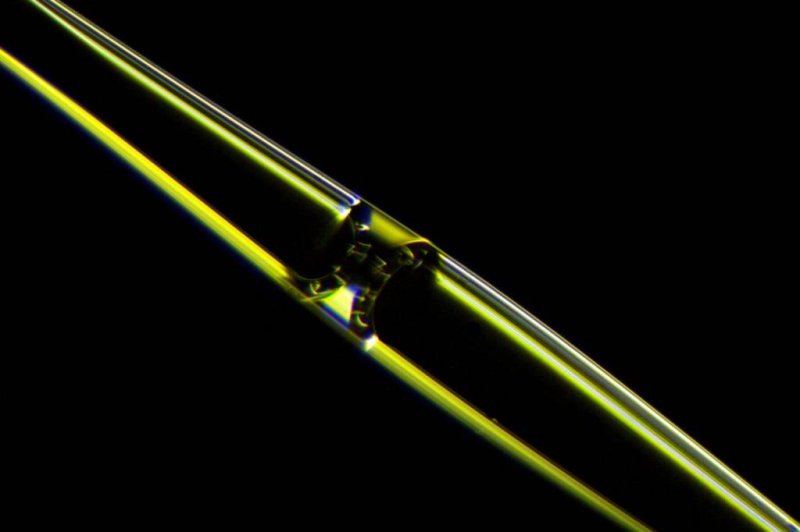A glass fluid meniscus inside the opto-mechano-fluidic resonator carries particles through for optical detection at extremely high speeds. Photo by University of Illinois
CHAMPAIGN, Ill., June 6 (UPI) -- Scientists at the University of Illinois have developed a highly sensitive photonic sensor -- a device they hope will enable new high-speed diagnostic technologies.
Researchers have previously identified links between various diseases, such as cancers and anemia, and mechanical properties of infected cells -- properties like compressibility and viscoelasticity. Currently, there aren't diagnostic tools sufficiently fast or sensitive to detect these properties.
"Because of this, we have a substantial knowledge-gap, and have barely scratched the surface of understanding of how diseases modify the mechanical properties of cells in our body," Gaurav Bahl, an assistant professor of mechanical science and engineering at Illinois, explained in a news release. "Developing knowledge around the mechanics of cells and bioparticles can help us understand the mobility of these micro-objects throughout the human body, about how tumors form, about how cells and bacteria can propagate through us, how diseases spread, and more."
Researchers designed their breakthrough sensor by combining two optical sensing technologies, flow cytometry and mechanical sensing.
"We have developed a new microfluidic opto-mechanical device that optically detects the mechanical perturbations created by individual microparticles flowing through the fluidic channel at very high speed," said Kewen Han, a doctoral candidate at Illinois.
Han is the first author of a new paper describing the breakthrough, published in the latest edition of the journal Optica.
Bahl, Han and their colleagues successfully tested the opto-mechano-fluidic resonator, measuring the density and compressibility of particles as small as 660 nanometers as they whizzed by the sensor.















